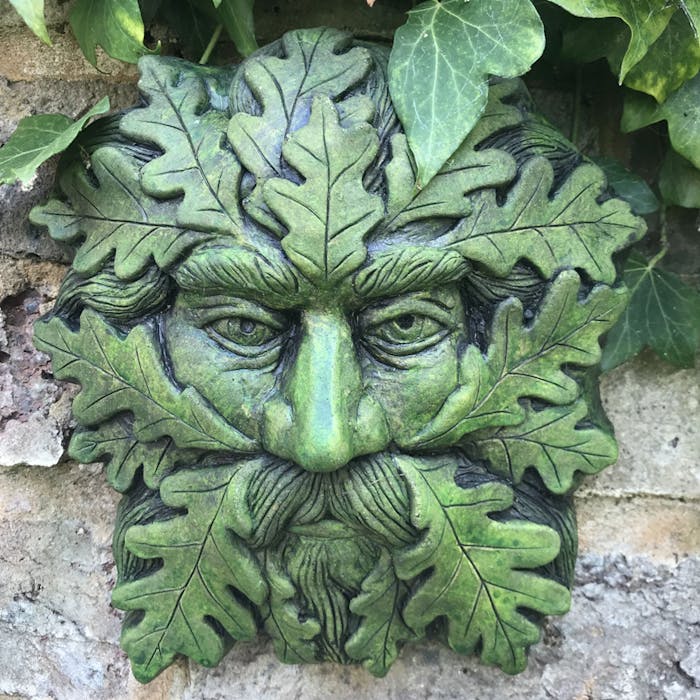
The Green Man, spirit of the woods
Glance upwards in many of Britain’s great cathedrals and churches and you may well catch sight of the Green Man looking down at you, with tree leaves curling from his mouth. After being a neglected part of Britain's folk history, the Green Man, and related festivals in his honour, had something of a revival in the 20th century, and many continue to this day, particularly around the time of May Day. But who, you may ask, is he?
The name ‘Green Man’ was first used by Lady Raglan in March 1939 in an article she wrote for the journal Folklore ; before this, they had been known just as ‘foliate heads’ and no-one had paid them any particular attention.
The Green Man is usually depicted either as a male face made out of leaves, or a male face with leaves coming out of the mouth, and sometimes nostrils and ears. The figure is frequently found in churches and cathedrals, and is also quite a common pub name. The assumption is that the Green Man is a pagan figure who has managed to sneak into Christian decoration.
The Green Man remains a mysterious figure still. Many believe he represents ancient tree-worship or pagan fertility rites - a symbol of death and re-birth and a symbol of spring.
In our very urban lives, the Green Man seems to have increased in popularity as a way of reaching out to our rural and agrarian past, and now even has a music festival named after him, along with May Day events like the Hastings Jack in the Green festival. Indeed, the Green Man is surely the multiple identity of characters including Jack in the Green, Robin Goodfellow and that other ultimate forest-dweller Robin Hood.
Further reading
Links to external websites are not maintained by Bite Sized Britain. They are provided to give users access to additional information. Bite Sized Britain is not responsible for the content of these external websites.
